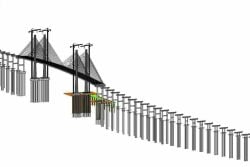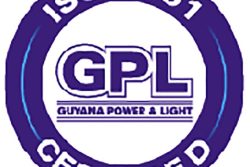Like grassroots women all around Guyana and in developing countries the world over, water is not something which they can take for granted. They recognise that safe water is essential for life and that contaminated water makes their children sick and can also kill them; according to the World Health Organisation, every year nearly two million children around the world die from diarrhoeal diseases contracted mainly through the use of contaminated water.
El Nino has seen the drying up of surface water here and particularly in urban areas, increased rationing of the precious resource. The extremely hot weather condition has increased the travails of women and children to whom the burden of collecting and storing water usually falls. Not only must they trudge long distances to fetch water home for cooking and sanitation purposes, but with the reduced availability, must also wait for long periods at communal stand pipes – unwaged thankless tasks.
Sustainable water experts John Sauer and Andra Tamburro, describe access to safe water as “the most basic of glass ceilings”. In an article posted last year on the Huffington Post blog site, Sauer and Tamburro, both of a Washington DC based group called ‘Water Advocates’, said: “Whether a woman lives in Africa, South America or Asia, one of her primary tasks is to gather water for her family. There is no convenience of indoor plumbing for these women. Compare the trek you make to your bathroom or kitchen for a glass of water to the journey women in the developing world must make — three miles a day on average — to fetch dirty water from mainly contaminated sources, such as rivers, unprotected springs and shallow wells. All this fetching for water uses up 40 billion hours annually of women’s time worldwide. It could be more productively spent on income-generating activities, education and caring for their families.”
This may seem far-fetched to women in developed countries or even some right here in Guyana who, because they have tanks and pumps, have only to turn on a tap to get water for their daily tasks and ablution; and who can choose between using a filter or different brands of bottled water for drinking purposes. However, for too many of their peers, access to safe water, which ought to be a right is sadly lacking.
The Guyana Water Incorporated (GWI) touts its ‘water is life’ slogan/motto, but is yet to truly emulate it. Like its sister utility, the Guyana Power and Light, it plugs conservation which no one should have a quarrel with except for the fact that it’s impossible to conserve that which is largely unavailable. After decades of trying, this agency is still unable to fully supply Georgetown, let alone the rest of the country, with adequate potable water daily and of a quality that will not see its users affected and infected by amoebic dysentery, gastro enteritis or other diarrhoeal diseases. In this, the 21st century, where Guyana has already joined the rest of the world with the use of cellular phones, satellite and wireless internet among other technology, that “forgotten glass ceiling”, access to safe water still eludes us.




